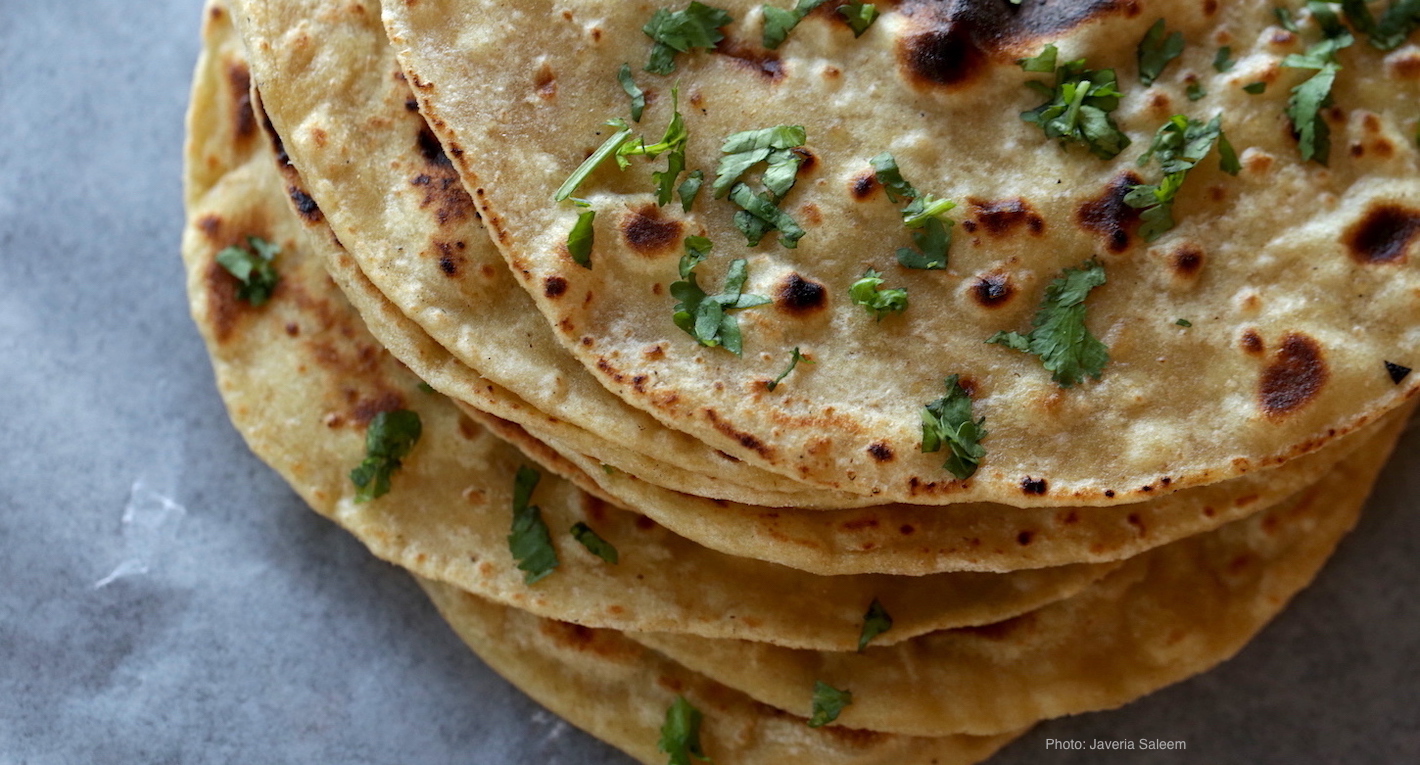Parathas

vegetarian | contains dairy and gluten
start to finish: 35 minutes plus 1 hour for the dough to rest
makes 5 parathas
In Hyderabad, this unleavened flatbread differs from a phulka (or chapati), by the fact that a paratha contains oil and ghee, while a phulka does not. As such, parathas are richer and more filling. Parathas are also always cooked on a lower temperature so that they are toasted lightly while allowing their delicate internal layers to gently open up.
Just remember to start preparing the dough at least 90 minutes before serving: you will need 10 minutes to make the dough, 60 minutes to let the dough rest and 25 minutes or less to roll and fry the parathas.
Ingredients:
For making the dough
1 cup whole wheat flour (preferably durum wheat)
¼ cup all-purpose flour
1 teaspoon salt
½ tablespoon canola oil
½ tablespoon ghee (clarified butter)
6 tablespoons water to bind the dough
For rolling and frying the parathas
3 tablespoons of all-purpose flour, to be used little by little throughout the rolling process
1¼ teaspoons oil for rolling parathas (¼ teaspoon per paratha)
5 teaspoons ghee for frying parathas (½ teaspoon on both sides of each paratha)
Utensils:
large mixing bowl
rolling pin
heavy-bottomed, medium 8-inch skillet
spatula
Method:
In a large bowl, add all the flour, salt, oil and ghee. Mix well, adding the water slowly as you knead the dough with your fist. Knead for about two minutes until the dough forms a large ball. It should neither be too hard nor too soft, but pliable to the touch so that it is easy to roll out later and requires only a bit of flour when rolling.
Cover the dough and set it aside for at least 30 minutes at room temperature.
After the dough has rested, break it into five even lemon-sized balls.
On a clean, flat surface, sprinkle some flour. Roll each ball out with a rolling pin to form round parathas about 4–5 inches in diameter.
Spread ¼ teaspoon of oil on the top side of each uncooked paratha. Dust the top of each paratha with a teaspoon of flour.
Use your hands to roll each paratha into a cigar shape and then twist the rolled dough into a tight circle like a cinnamon roll or a pinwheel roll.
Use your rolling pin to flatten each pinwheel into a disc 6 inches in diameter and evenly thick all around.
Heat a heavy-bottomed skillet on MEDIUM-LOW. After 3 minutes, test the heat of the pan: use your fingers to sprinkle some cold water onto the hot surface. If the water quickly balls, sizzles and evaporates, the pan is ready. Do not let the pan get too hot that it starts to smoke.
Place one rolled out paratha on the pan. Let it cook for about 20 seconds, and when air bubbles start to form on top, turn it over.
Drip ½ teaspoon of ghee on the top semi-cooked side. After 30 seconds, flip it back over.
Gently press down the paratha with the back of your spatula for 5–10 seconds. Drizzle ½ teaspoon of ghee on this side as well, then flip over once more and cook for another 5 seconds. Transfer to a serving plate.
Repeat steps 9 to 11 for the other uncooked parathas.